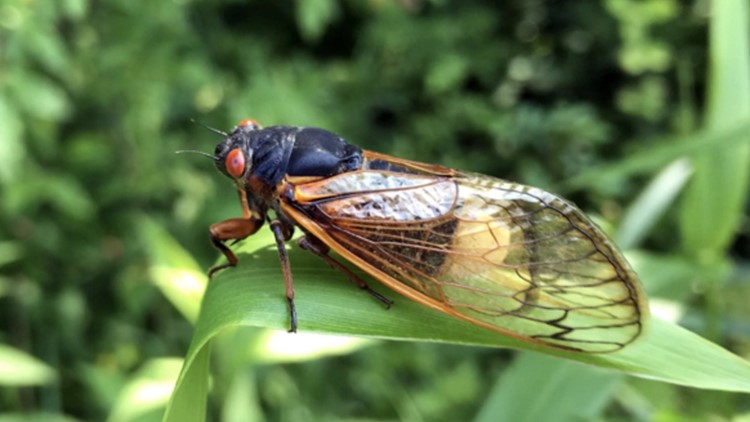NEW YORK — Trillions of cicadas will emerge across several U.S. states this spring in an event one expert dubbed "cicada-geddon." Not only are more cicadas than usual expected this year, but some of them will be "zombie cicadas" that are infected by a sexually transmitted fungus that makes them hyper-sexual.
Periodical cicadas spend most of their lives underground and only emerge after 13 or 17 years. This year, two broods of cicadas will emerge: Brood XIX, which comes out every 13 years, will emerge in the Georgia and Southeast, and Brood XIII, which emerges every 17 years, will appear in Illinois.
With this convergence, the bugs will arrive in numbers that have not been seen in generations.
Matthew Kasson, an associate professor of Mycology and Forest Pathology at West Virginia University, says both of these broods can be infected by a fungal pathogen called Massospora cicadina.
Once the cicadas emerge from the ground, they molt into adults, and within a week to 10 days, the fungus causes the backside of their abdomens open up. A chalky, white plug erupts out, taking over their bodies and making their genitals fall off.


"The cicada continues to participate in normal activities, like it would if it was healthy," Kasson told CBS News. "Like it tries to mate, it flies around, it walks on plants. Yet, a third of its body has been replaced by fungus. That's really kind of bizarre."
Kasson said the reason the cicadas might be able to ignore the fungus is that it produces an amphetamine, which could give them stamina.
"But there's also something else unusual about it," he said. "There's this hyper-sexualized behavior. So, males for example, they'll continue to try and mate with females — unsuccessfully, because again, their back end is a fungus. But they'll also pretend to be females to get males to come to them. And that doubles the number of cicadas that an infected individual comes in contact with."
Usually, male cicadas will let out a loud humming sound to attracted female cicadas and the female will flick her wings to signal she wants to mate. But the fungus has males flicking their wings like females to attract males and in turn, infect them, Kasson says.


"In that way, the fungus is sexually transmissible. So, it spreads like an STD," he said.
Kasson said where the fungus originates is still unclear. "A lot of this is still unclear because there's a lot that happens below our feet," he said.
Massospora cicadina produces spores on the cicadas and it is suspected that when the cicadas die, the spores get into the soil and infect other cicadas underground.
"In the month leading up to them emerging all together in a spectacular fashion, they're waiting there, sub-surface, for the soil to reach 64 degrees," Kasson said. It's suspected the cicadas are infected when they are waiting underground, or when they are born and dig themselves into the soil, coming in contact with the fungus spores.
Fungus usually needs a host, like an insect, to carry the spores and spread the infection. Then, it kills the host.


It's suspected the Massospora cicadina fungus lays dormant for years and then begins to become a "puppet master" when the cicadas reach adulthood, Kasson said. "Because this is such a bizarre life cycle for an insect, the fungus has had to change its strategy. So, it basically keeps the host alive long enough to maximize dispersal," he said.
It is unclear how the fungus would affect other wildlife or humans, but Kasson said in his research, he's observed thousands of compounds in infected cicadas and some could be toxic.
"We know that a lot of animals are gobbling these cicadas up as they're emerging — snakes and birds. Is it possible they're having an effect on the animals that eat them? Yes, it is possible." But, he said, less than 5% of cicadas are infected with the fungus and researchers have yet to observe any impact on other wildlife.
Kasson urges people not to eat the cicadas or kill them, but to take photos if they see the fugus on the bugs and share them with online science communities, like iNaturalist, to help researchers.


